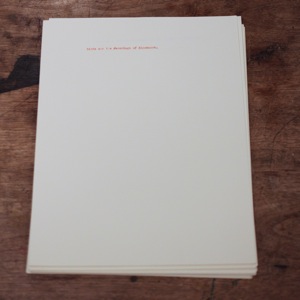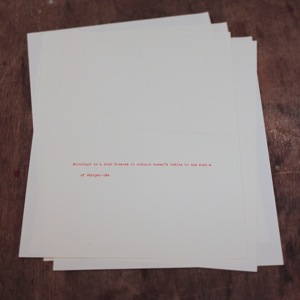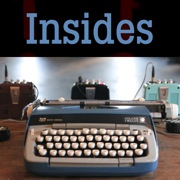
title: Insides
medium: sound + scent + design + interactive performance
created in: 2015
created with: Katie C. Doyle
Insides is a performance piece that uses technology, sound and audience interaction to explore issues of patience, consent, intimacy and #wreckage. Katie Doyle and I performed it three times in total: at Comfort Station in the fall of 2015, at Intuit that winter, and at Constellation that spring.
Here’s what happened the third time.
9:00. The crowd began to gather in the lobby. By the door was a stack of rolled black strips of cloth, and a typewritten card instructing people to blindfold themselves. Nick and Lia stood guard in black jumpsuits, making sure everyone understood that they wouldn’t be allowed in with their vision unobstructed.
At 9:15, Katie emerged, also dressed in a black jumpsuit. She, Nick and Lia began leading people into the performance space one by one, seating them on the floor.
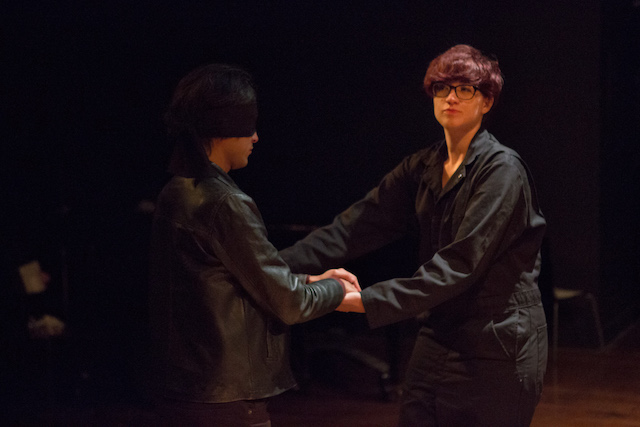

As the audience entered they could smell the pungent aroma of gin and clove cigarettes. Sounds filled the air: gentle synth figures, tuned percussion, heavy rain, objects crashing and breaking. Sometimes they heard something else as well: a typewriter, amplified and distorted.

The music got louder and denser, the crashing sounds more aggressive. Eventually Katie started removing people’s blindfolds. Now they could see me — sitting at a desk, typing, wearing a black dress and red lipstick. To my left and right were stacks of paper. In front of me were three small amps. Two of them were connected by silver wires to circular black objects labeled with silver hashtags.
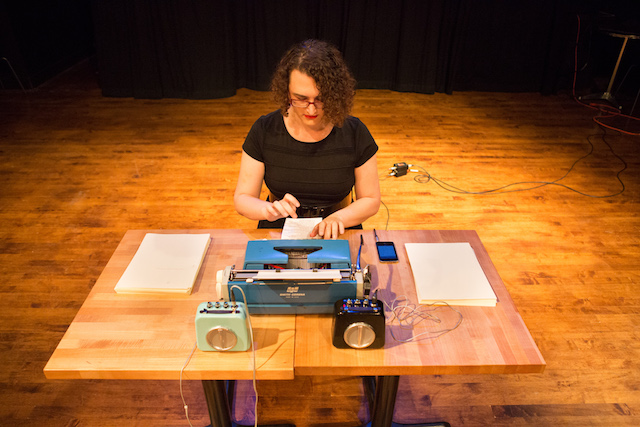
The sounds cut off just as they were starting to become unpleasantly loud. After a long pause, Katie and I walked to the front of the desk. She picked up an amp, attached it to the front of my dress, and started using the circular object like a stethoscope, rubbing it along my clothes and my body, amplifying the sounds of friction. Occasionally the amp emitted bursts of high-pitched feedback.

Next I did the same thing to her, but where she was exploratory and scientific, I was rough and aggressive, using the scope to push her body into awkward positions. When I was done I held my scope up to her amp, and she held hers one up to mine, creating a complex tangle of feedback. We stood and stared at each other, luxuriating in the harsh sound.
Then we moved out into the room, our amps still squealing, and began scoping the audience. Before we touched anyone we paused in front of them and asked, “May I?” We let each person guide our interaction. Sometimes we scoped them the way Katie had scoped me, as if we were discovering pockets of feedback hidden inside their bodies. Sometimes they let us push them around with the scopes, like I had done to Katie. Sometimes they took the scopes from us and made noises of their own.


Eventually we met at the front of the room. In the first two performances, we had scoped each other’s amps again, sat in the violent feedback noise again. But this time, Katie’s amp had inexplicably gone dead. I made noises at her with mine, and she stood there in silence.
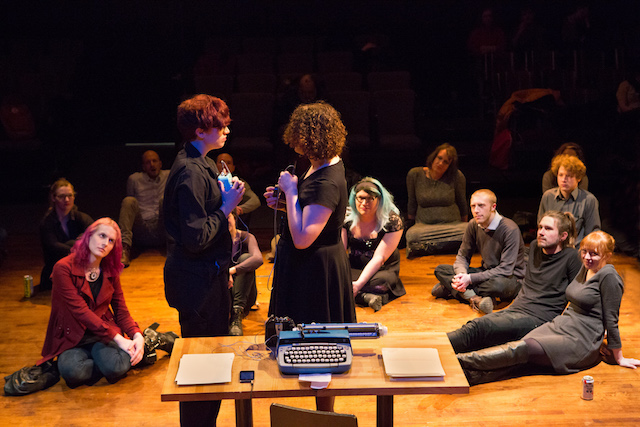
Then, suddenly, we each dropped our scopes, creating a harsh electronic squeal. Katie gently removed the amp from my dress and placed it on the table. I removed hers with a single, abrupt jerk. We each picked up half of the stack of paper I had typed up earlier and walked out of the room, placing the pages on music stands placed on either side of the door.
When the audience followed us out, they picked up the pages and saw what I had typed: a series of tweets featuring the hashtag #wreckage.
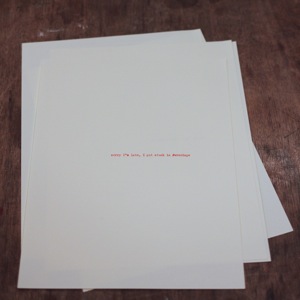

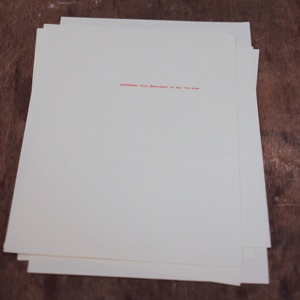
(All photos by Marc Perlish, except for the last four, which were taken by Tim Porter at the premiere.)
